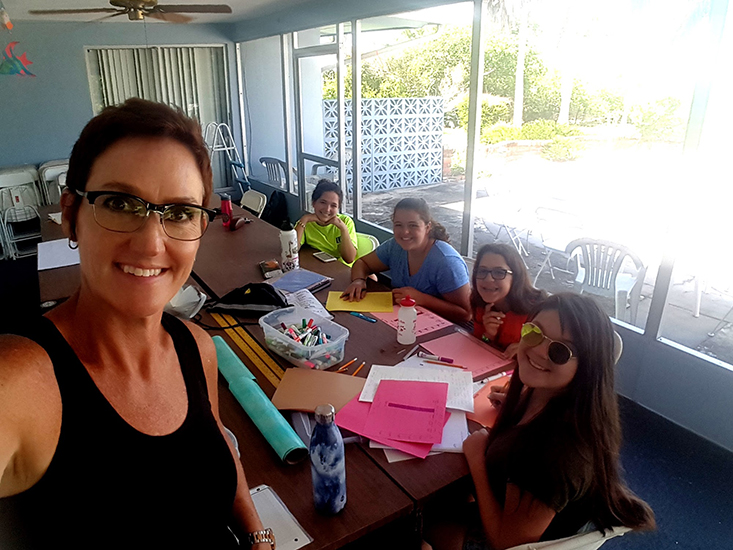Blog post by Heidi Souder & Makenna Martin with photos provided by OCG staff.
The Beaches Rock! lab explored aspects of coastal and geological oceanography, building upon the previous week’s field trip to Caladesi Island. The first part of the lab focused on grain-size analysis of samples collected along the beach profiling transect from the dunes to below the swash zone.
Each sample was weighed and shaken in a set of sieves so the girls could determine how much of each grain size was captured in a set of successively smaller sieves. They learned that terms like mud, sand, and gravel are words scientists use to describe grain size but not grain composition. By looking at the range of grain sizes, the girls made interpretations of how energetic the environment was at the time the grains were deposited on the beach. Larger grains meant more energy at the time of deposition while smaller grains meant lower energy at the time of deposition.
In the second part of the lab, the girls used the beach profile data (taken with the Stadia Rod and Eye Level during the Caladesi Island field trip) to draw the shape of the beach. Looking how the shape of the beach changes over time can tell coastal scientists if sand is being deposited or eroded from a barrier island and how this affects wildlife and aspects of human usage.
Third, the girls constructed a dirt cake, an edible model illustrating one type of sedimentary structure (horizontal bedding) visible in a hole they dug on the beach. The model illustrated two principles in sedimentary geology: 1) the Law of Superposition: in an undisturbed sedimentary sequence, the layers at the bottom are older than the layers at the top, and 2) the Law of Original Horizontality: in an undisturbed sedimentary sequence, sedimentary layers are laid down in horizontal layers.
Finally, the girls consumed their model!
